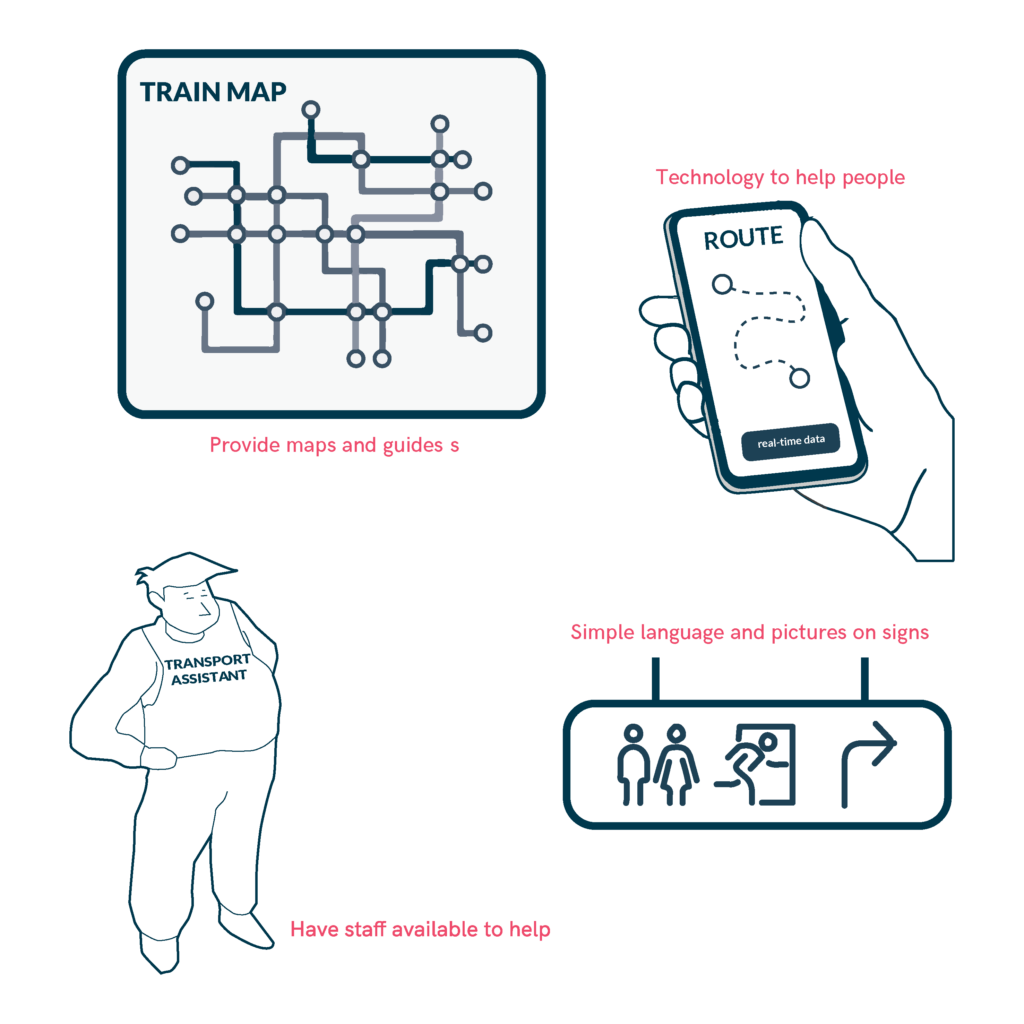Cognitive-Friendly Design
Clear, simple design elements help guide passengers through the often complex environments of mobility hubs. A comprehensive, multi-sensory wayfinding system is essential to support independent navigation, especially for people with cognitive disabilities, older adults, travelers unfamiliar with the area, or those under stress. But beyond orientation, cognitive accessibility must also extend to how people access and pay for transport, ensuring the process is intuitive, inclusive, and does not rely solely on digital tools.

-
Use simple, easy-to-understand language and clear pictograms on all signage to assist users with limited literacy or non-native language skills.
-
Provide printed maps and visual guides that clearly show how to move through the hub and connect to key destinations.
-
Incorporate real-time information through screens, apps, and websites — but make sure essential information is also available physically and clearly displayed.
-
Ensure staff are present and visible throughout the hub to assist users who may need extra support or reassurance.
-
Guarantee easy access to physical ticket purchases, including clear signage to ticket machines and in-person service at each station, so no one is excluded due to lack of digital skills, smartphones, mobile data, or battery.
-
Allow single trip payments via contactless credit or debit cards, enabling quick access without the need to download an app or create an account.
-
Make all purchasing and validation systems intuitive, clearly marked, and placed at accessible heights.
-
Ensure all payment interfaces include visual, tactile, and audio cues to guide users through the process.
-
Design every aspect of the hub — signage, ticketing, navigation, and interaction — with universal design principles to ensure it works for everyone, not just the average user.
Sources
- https://accessible-eu-centre.ec.europa.eu/content-corner/digital-library/en-172102021-accessibility-and-usability-built-environment-functional-requirements_en
- https://www.iso.org/standard/71860.html
- https://www.t-l.ch/collectivites/guide-des-amenagements-pour-les-transports-publics-routiers-tl/
- https://www.leitfadenbarrierefreiesbauen.de/fileadmin/downloads/archiv/barrierefreies_bauen_leitfaden_en_bf_version2.pdf
- https://www.vitoria-gasteiz.org/http/wb021/contenidosEstaticos/especial/cea/20190917/Avance_PMSEP_2020_2030.pdf
- https://www.punt6.org/es/books/espacios-para-la-vida-cotidiana/
